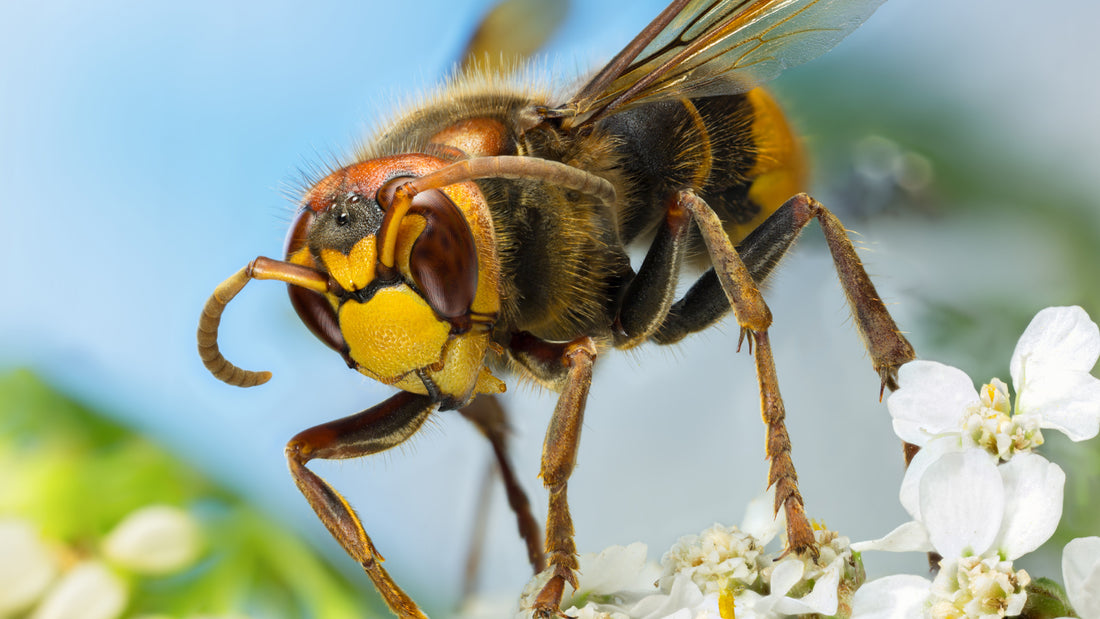As the days grow shorter and the air becomes crisper, the late summer and fall seasons bring with them a noticeable change in the behavior of bees and wasps across America. The once-docile pollinators seem to transform into more aggressive creatures, often causing concern and unease among humans.
While this shift in demeanor might seem alarming, there are scientific reasons behind this change in behavior, rooted in the life cycle and ecological dynamics of these insects. In this article, we delve into the fascinating world of bees, wasps, and their seasonal aggression, exploring the contributing factors and suggesting how we can stay safe from the stings.
The seasonal shift: Understanding aggression in bees and wasps.
Late summer and fall mark a critical time in the life cycle of bees and wasps. As the warmer months draw to a close, the colonies' focus shifts from reproduction and nest building to the survival of the hive or nest during the colder months. This shift in priorities prompts changes in behavior that may manifest as increased aggression.
Wasps: Wasps can be social or solitary, however most wasp species are solitary. They capture other insect to feed their young. With the approach of winter, social wasps that have colonies produce new queens that will hibernate through the cold season. The decline in food availability for all wasps prompts them to become more aggressive in defending their nests and securing sustenance.

If you enjoy eating outside this fall, cover food so wasps can't forage on your delectables. They're predatory insects looking for protein and sweets.
Hornets: These predatory insects are recognized for their larger size compared to other wasps. Hornets typically display black and yellow or black and white coloration on their bodies. They construct paper-like nests from chewed wood fibers and saliva, often suspended in sheltered locations. They’re known for their aggressive behavior because they vigorously defend their nests. They can deliver painful stings when threatened.
Yellow Jackets: Known as social wasps, these stingers become even more voracious in the fall when food is more scarce. They seek out protein and sweet things to consume including popular drinks enjoyed outside, fruits, and more. All females can sting with lance-like small barbs and they do so without much provocation.
Bumblebees: Bumblebees, while generally less aggressive than wasps, also undergo changes in behavior during late summer and fall. As the colony prepares for the winter, the focus shifts from raising new bees to preserving the current population. This transition can lead to bumblebees exhibiting increased vigilance and defensive behaviors.

Ecological factors influencing aggression.
Several ecological factors contribute to the increased aggression of bees and wasps during late summer and fall:
Resource scarcity: As flowers and nectar sources dwindle, competition for remaining resources intensifies, prompting defensive behaviors to safeguard these vital supplies.
Nest protection: With fewer individuals to guard the nest or hive, remaining bees and wasps may become more aggressive in protecting their homes from potential threats.
Survival instincts: The impending winter triggers a survival instinct, prompting these insects to become more defensive and focused on self-preservation.
Coexisting harmoniously.
While the increased aggression of bees and wasps can be disconcerting, there are measures individuals can take to ensure a harmonious coexistence:
Maintain Distance: If you encounter a bee or wasp, remain calm and avoid sudden movements. Slowly and calmly move away from the insect.
Protect food and drinks: When outdoors, keep food and drinks covered to prevent attracting bees and wasps.
Eliminate attractants: Seal trash cans tightly, clean up fallen fruit, and remove standing water to reduce attractants around your home.
When you want to get rid of wasps.
Use a plant-powered spray: Wondercide Wasp & Hornet Spray is a lab tested and proven to work, plant-powered solution that allows you to quickly kill wasps. The 15' long-range spray also kills yellow jackets and hornets Wasp & Hornet is safe around pets and family when used as directed.
Late summer and fall bring about a noticeable change in the behavior of bees and wasps across America, with increased aggression being a common characteristic during this period. This transformation is rooted in the insects' life cycle and ecological dynamics, as they prepare for the challenges of the upcoming winter.
By understanding these factors and taking appropriate actions, individuals can coexist harmoniously with these vital pollinators while minimizing potential conflicts. The Wondercide Wasp & Hornet Spray offers a responsible and effective solution to manage aggressive wasp populations, contributing to a more peaceful environment for all.




